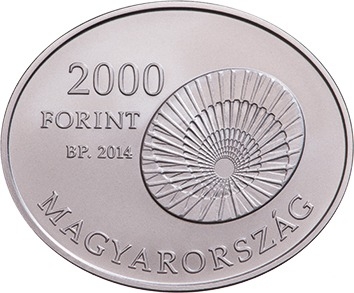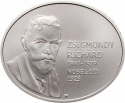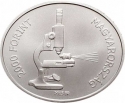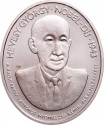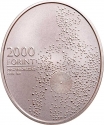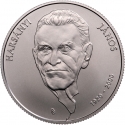You are about to finish your registration. Please check your mailbox (including spam folder). There should be a letter with a confirmation link. Check setting to make sure that your e-mail address is correct.
Send letter againDescription
Róbert Bárány (1876-1936) hungarian descent, was an Austrian doctor and university professor. He received the Nobel Prize in Medicine in 1914 for his groundbreaking research on the inner ear.
Despite contracting tuberculosis as a child, which left his knee joint permanently stiff, he pursued a successful career in medicine. Bárány's interest in the vestibular apparatus of the inner ear led to the development of the caloric test, a diagnostic tool still used today.
This test involves irrigating the ear canal with warm or cold water to induce nystagmus, a response that helps assess vestibular function. His work elucidated the physiological mechanisms underlying balance and spatial orientation.
During World War I, despite his disability, Bárány volunteered for frontline medical service and was eventually captured by the Russians and held as a prisoner of war.
After the war, he faced professional challenges in his native Austria and eventually settled in Sweden, where he continued his research and teaching.
In addition to the Nobel Prize, he received several other prestigious awards for his work. Bárány's discoveries revolutionized the understanding and treatment of inner ear disorders and laid the foundation for modern vestibular science.
Engraver: Fanni Vékony
Obverse

|
Depicts a portrait of Róbert Bárány. The engraver's privy mark is visible at the right shoulder. In the lower inscriptions, separated by dots, the inscriptions "NOBEL PRIZE" and "1914" can be read. BÁRÁNY |
|---|---|
Reverse

|
Depicts a spiral staircase, referring to the structure of the inner ear. On the left side, in three horizontal rows, the denomination, the inscription "FORINT," as well as the mint mark "BP" and the issuance year "2014" are placed. The lower inscription reads "HUNGARY". 2000 |
| Edge |
2000 Forint
Hungarian Nobel Prize Winners
Róbert Bárány
Subscribe series
KM# 870 Adamo# EM280
Hungarian Nobel Prize Winners
Róbert Bárány
Characteristics
| Type | Commemorative Issue (Non-circulating) |
| Material | Copper Nickel |
| Weight | 12.5 g |
| Diameter | - |
| Width | 30 mm |
| Height | 25 mm |
| Thickness | 3 mm |
| Shape |
|
| Alignment | Medal |
| Mint |
Budapest Mint (BP)
|

